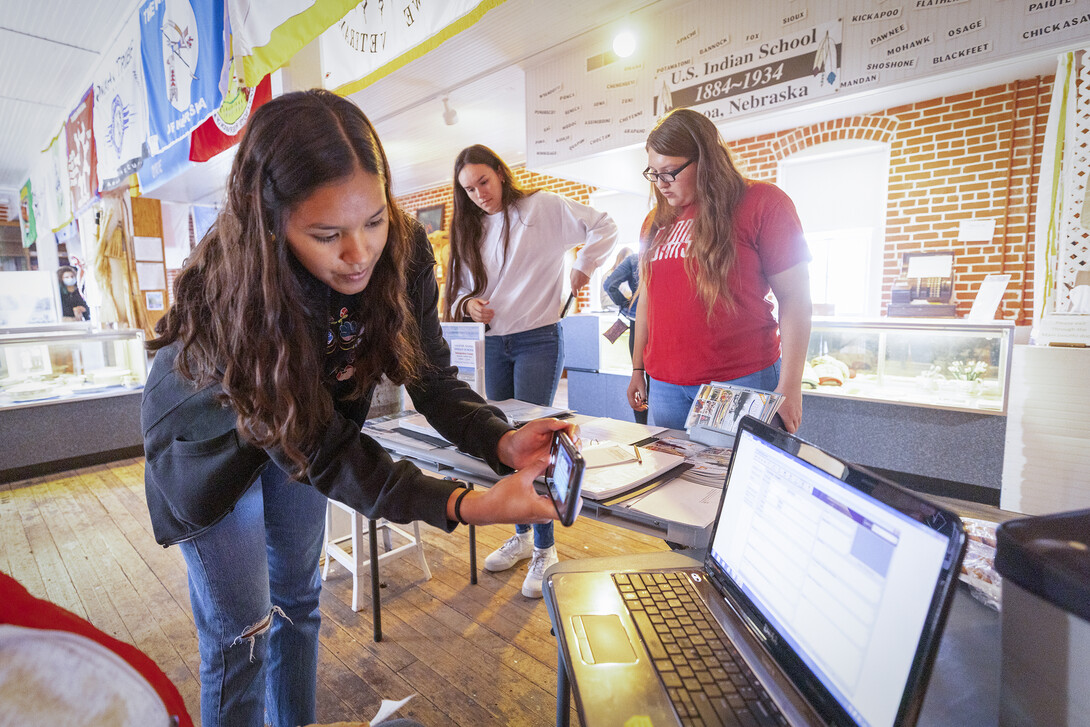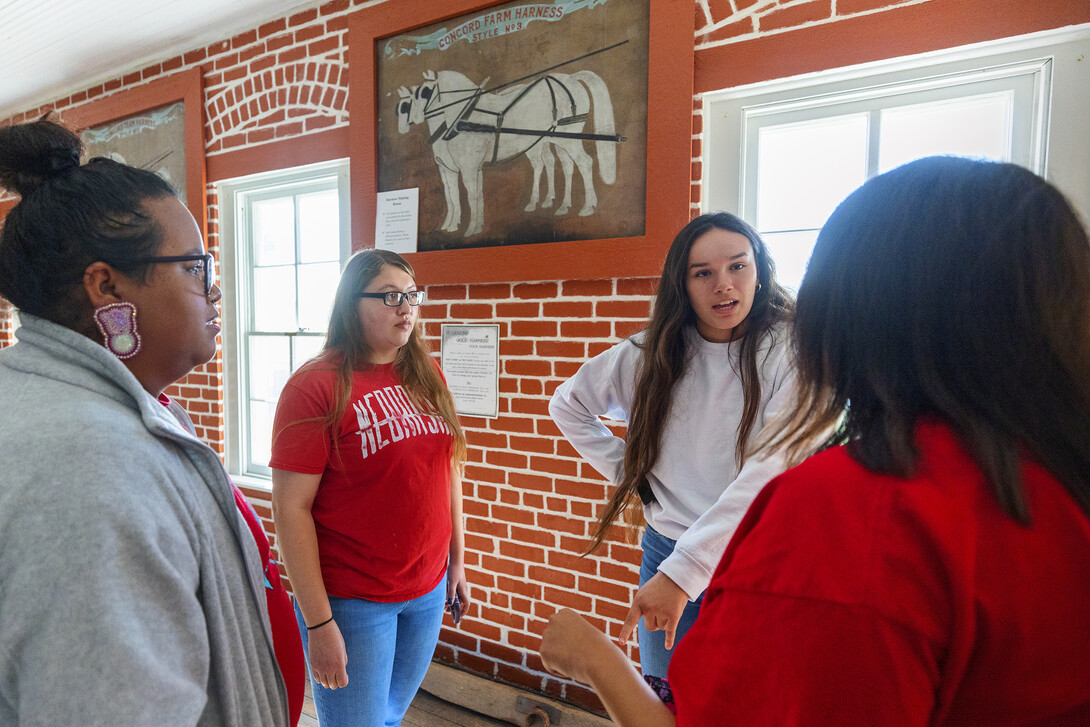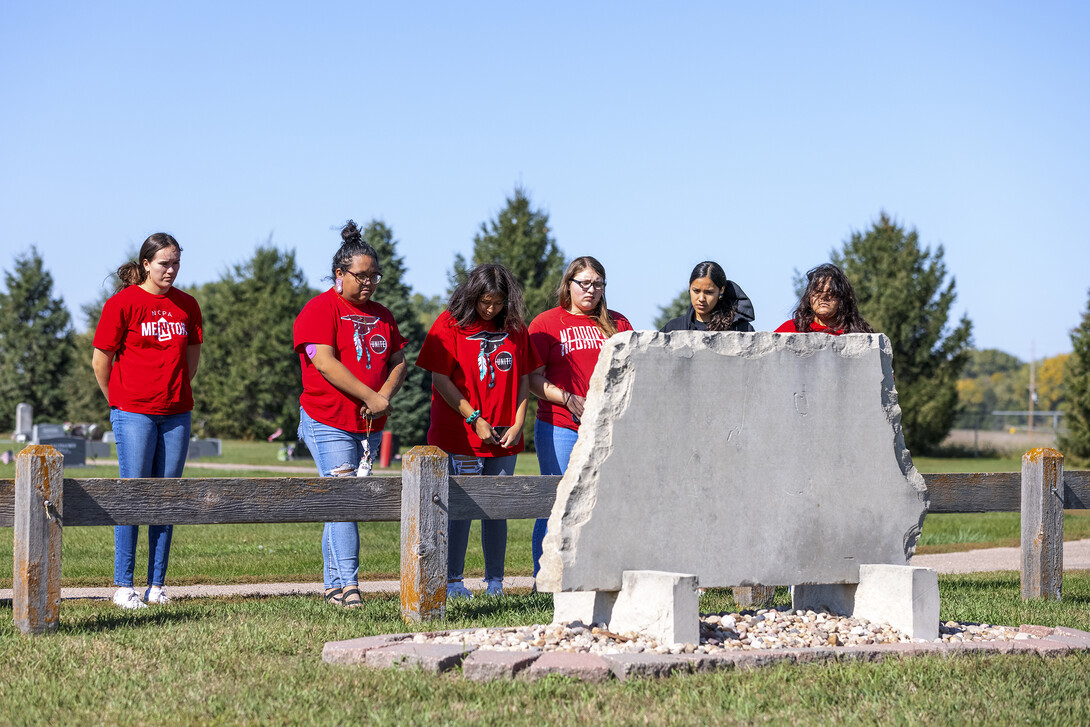
Winona Flowers was walking the same grounds in Genoa, Nebraska, that her great-grandfather walked, but their experiences could not have been more different.
Flowers’ great-grandfather was a young child when he was taken from his family and placed at the Genoa U.S. Indian School, one of more than 300 residential schools throughout the country that boarded Native children and attempted to strip them of their culture. These schools were most commonly established and run by the federal government or by religious organizations.
Flowers, as a first-year student at the University of Nebraska–Lincoln, was walking the grounds of the former Genoa school as a visitor, learning about the past — and her own family history.
Once the fourth-largest residential Indian school in the United States, the Genoa school covered 640 acres, with more than 30 buildings. Now, the Genoa U.S. Indian School Foundation museum is housed in the original manual training building. That original building is surrounded by buildings and homes that were built by the students of the school.
“They actually had his profile,” Flowers said. “He entered at 7 years old in 1927. It had his name and his assignment. I’d known for a long time that he went to a residential school, but I was surprised to find out that students built houses and buildings on the grounds.”
Flowers had never visited the museum, but she wanted to go when Nasia Olson-Whitefeather, president of UNITE, organized a trip. UNITE is a registered student organization that aims to empower Indigenous students at Nebraska.

Olson-Whitefeather, a senior from New Hope, Minnesota, was familiar with her own family’s history with boarding schools and heard about the Genoa school as a student at Nebraska. She was surprised that it had been turned into a museum.
“I didn’t know there was a boarding school in Nebraska, and when I found out, I really wanted to go visit,” she said. “I was going to go by myself, but the more I thought about it, I wanted to bring as many people as possible, just because it’s such important history. Then I found out we had UNITE members whose family members went there.”
Eleven students, some from UNITE and some from a Native American history class, went on the day trip, and Olson-Whitefeather said the experience was emotional.
“One of the UNITE members found her great-grandpa’s record and she didn’t know he learned carpentry at the school,” Olson-Whitefeather said. “She always just thought it was a skill he had. It was emotional for her the find out the truth behind his trade.
“I didn’t have any family connections at this school, but it still bothered me to think about the fact that my people have had to go through this era of assimilation, and it was emotional to see the building was still standing.”
She also felt a strong weight of sadness.
“Being in the carpentry building, with its original floors and the original structure, to know that people went in there and they were upset and scared and lost, and losing who they were — it hit me really hard,” she said. “At the train depot, on those stairs where they walked, at the top, they had their names, their native language, their regalia, and when they came down, they were handed a uniform, their hair was cut, they were told to speak English. Being there was a very surreal moment.”

Olson-Whitefeather said she is thankful that the museum exists, since the history of the boarding schools has largely been erased, but that a lot of the information at the museum was centered on the Genoa community at large and not on the students’ experiences.
“It was kind of disappointing seeing that they only kept one building, and we were not allowed to go see the other ones that were still there,” she said. “We kind of got the feeling that the town didn’t really understand that Genoa was made for the school, or that the town understood what happened there or the historical significance.
“One of the informational videos played made it sound like the school was a good thing, that it was exciting for the students. There was nothing exciting about these schools. It was kids, being taken away from their families, their tribes, and told to morph into a colonized society.”







